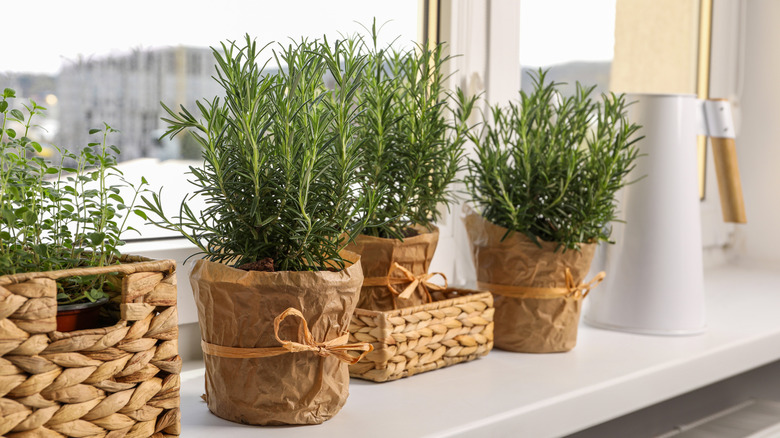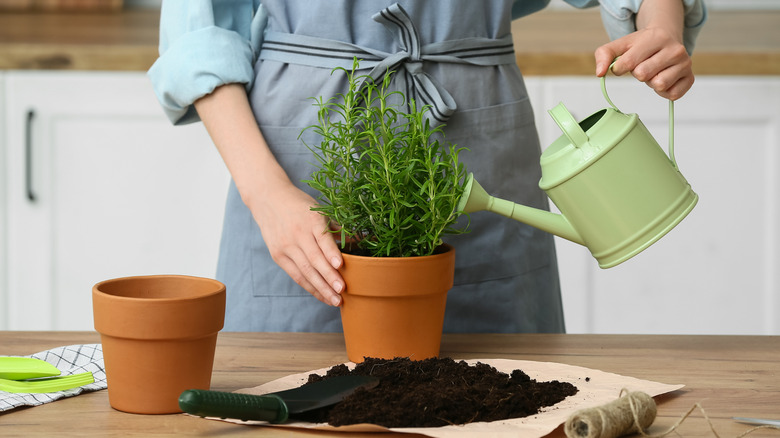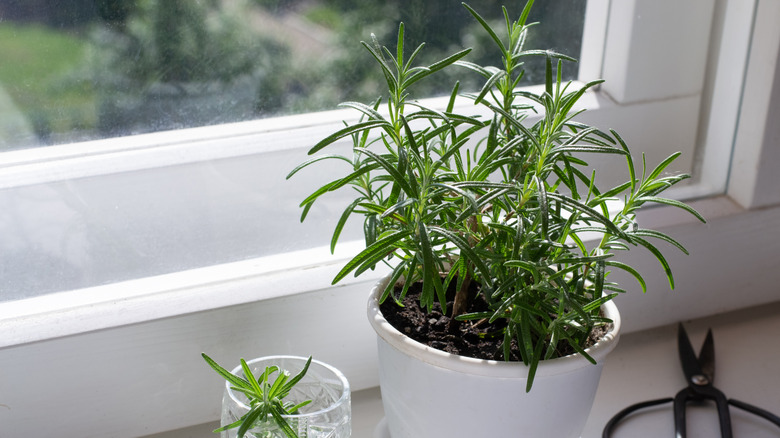Keep Indoor Rosemary Plants Alive By Fixing These Common Growing Problems
Growing rosemary (Rosemarinus officinalis) indoors is a common practice for gardeners with limited space or in cooler climates where it won't survive through the winter outdoors. This perennial herb is used in culinary applications, but can also be a great companion or flowering plant in your garden. Some people find it difficult to keep indoor rosemary plants alive because they face common growing problems related to moisture, light, and temperature.
Avoiding common growing problems starts with choosing the best pot for your indoor rosemary plants. This will give your plant a starting point for proper growth and adequate drainage. Of course, there are many things to consider when growing rosemary indoors that will impact the health of the plant. For example, moisture levels are essential for keeping rosemary alive indoors. It likes moist, well-draining soil. However, if you overwater the plant, it can develop mildew or root rot. On the other hand, not watering enough can make the rosemary leaves dry out, which means the plant is dead and will not continue to grow. Similarly, light and temperature conditions should be monitored to make sure the rosemary is in an ideal growing environment with plenty of bright light but cool temperatures.
How to adjust and maintain moisture levels for healthy rosemary plants
If you provide your rosemary plant with enough moisture and quality drainage, you can avoid major issues that tend to kill indoor rosemary plants, like mildew or dry soil. These issues come from inadequate moisture levels that leave the soil and roots either too dry or too wet for extended periods of time. Learning how to adjust the soil composition, drainage, and watering practices to meet the needs of your rosemary plant is the first step to preventing damage from these issues.
If drainage is the issue, you can help your rosemary thrive with one simple addition to the soil. Rosemary doesn't like having "wet feet," which basically means you don't want the roots sitting in moisture. Adding gravel to the soil can improve drainage to ensure water stays moving through without pooling by the roots. In addition, you will want to make sure the soil doesn't dry out, so consistent watering is important to keep your indoor rosemary alive. There is no hard and fast rule for soil watering, but you can spray a light sprinkling of water on the leaves weekly. However, you'll still want to keep an eye on the soil. When the top inch or two starts to feel dry, add water directly to the soil.
How to maintain a comfortable growing environment for your indoor rosemary
Other common growing problems that new gardeners encounter when trying to care for rosemary indoors stem from not maintaining a comfortable growing environment. Beyond moisture levels, light conditions and temperature control are the two most important considerations for a rosemary growing environment. Rosemary loves sunlight and grows best in full sun, with at least six to eight hours of bright light each day. This can be difficult to achieve indoors, but there are a few options to help you get set up. First, the best option is to place the rosemary in a south-facing window that gets direct sunlight. If you do not have a south-facing window, an east or west window will work, but you will want to be mindful of the actual amount of sunlight available.
When none of those options work in your home, you can supplement natural sunlight with grow lights. However, growlights can heat up the environment, making the area too warm, so make sure you have enough space to place them far enough from the rosemary to keep the soil at a cooler temperature. Generally, rosemary plants thrive in cool temperatures, but not cold. Somewhere between 40 and 60 degrees Fahrenheit is usually best. When either light or temperature conditions are not ideal for growth, your rosemary may begin looking laggy or weak. Address the issue as soon as possible to keep the plant from dying completely.


